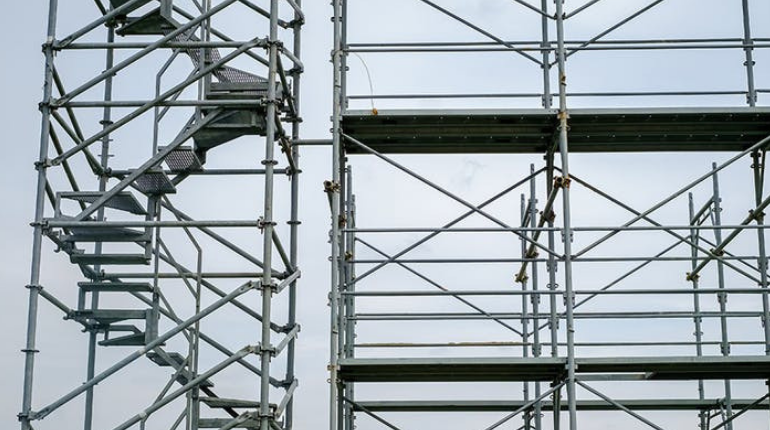In a fast-paced realm of construction, industrial scaffolding stands as a crucial component, providing necessary support and access for projects of various shapes and sizes. Whether it's a towering skyscraper or a small retail space, scaffolding enables workers to reach heights safely and proficiently, facilitating the complex tasks involved in building, renovating, or maintaining structures. Grasping what commercial scaffolding entails and its critical role in the industry can assist stakeholders make wise decisions about their projects.
As we delve into this investigation of commercial scaffolding, we will examine the different types utilized in modern construction, highlighting how they improve safety and compliance on job sites. Additionally, we will uncover the essential permits and regulations that govern scaffolding practices, ensuring that every project adheres to safety standards. From the intricacies of scaffolding design for elevated buildings to the logistical challenges of busy commercial sites, this article will provide valuable insights into the complex world of scaffolding and its impact on the construction landscape.
The Importance of Commercial Scaffolding
Business scaffolding plays a critical role in the building industry, providing the necessary support for workers, supplies, and equipment while guaranteeing safety and efficiency on job sites. Its design allows for easy access to various heights, enabling building teams to finish projects spanning from office buildings to significant renovations. Without scaffolding, many building tasks would be significantly more difficult and time-consuming, leading to holdups and increased costs.
The variety of scaffolding systems on the market means that specific needs for each project can be adequately met. Whether it's system scaffolding for quick assembly or modular options for flexibility, selecting the appropriate scaffolding can enhance efficiency and productivity. This capability is especially crucial in business projects, where punctuality and precision are critical to maintaining financial plans and client satisfaction.
Furthermore, the safety features integrated into modern scaffolding systems are vital in protecting laborers on building sites. With proper installation and maintenance, scaffolding can significantly reduce the risk of falls and other incidents. Adhering to protection regulations and guidelines not only safeguards the staff but also contributes to the project's overall success, making the significance of commercial scaffolding evident in every building endeavor.
Security and Compliance in Scaffold Construction
Ensuring security and adherence in scaffold construction is crucial for the safety of employees and the success of business endeavors. Scaffold systems must meet specific standards set forth by the OSHA to provide a secure working environment. Adherence with these regulations not only protects workers from potential accidents but also helps companies avoid costly fines and legal ramifications. A strong safety mindset begins with understanding these regulations and incorporating them into all stages of scaffold design and implementation.
Regular safety evaluations are a vital aspect of maintaining compliance in scaffold operations. https://www.scaffolders-kent.uk/best-commercial-scaffolding-in-kent/ should conduct thorough assessments of scaffolding setups before work begins, checking for any possible dangers such as structural soundness, proper assembly, and weight limits. Workers should be motivated to report any hazardous conditions immediately, fostering an transparent dialogue about safety. Additionally, scaffold systems should be reviewed at regular intervals throughout the duration, ensuring that any problems are resolved promptly and efficiently.
Education is essential in cultivating a safe working environment. Making sure your crew is properly trained on the particular needs and safety measures associated with scaffolding reduces risks and enhances compliance. Educational sessions should cover Occupational Safety and Health Administration guidelines, the proper setup of scaffolding, hazard identification, and emergency protocols. Knowledgeable workers are not only more capable to identify and prevent hazards, but they also contribute to a more secure job site through compliance to set safety guidelines. spintax
Selecting the Right Scaffolding Solutions

Selecting the appropriate scaffolding solution for a commercial project is critical for ensuring safety, efficiency, and compliance with regulations. Factors such as the project's scale, height, and complexity significantly affect the type of scaffolding method to be used. For large-scale projects, modular scaffolding often is preferred due to its versatility and ease of setup, while specialized systems like tube and clamp provide adaptability for specific site requirements. Grasping the specific needs of the work being done will guide the decision-making procedure for choosing the most appropriate scaffolding.
An additional essential aspect to consider is the substances used in scaffolding. Aluminum scaffolding has gained favor in business applications due to its light design, which enhances mobility and reduces work expenses during installation. However, projects requiring heavy-duty capabilities may benefit from steel scaffolding, known for its strength and durability. Assessing the loads the scaffolding will need to support, alongside environmental factors like wind and weather conditions, is crucial in selecting the appropriate substances that will withstand the requirements of the site.
Finally, it is important to collaborate with experienced scaffolding providers to discuss your options. Experienced providers can offer insights and advice tailored to your project, simplifying the decision making. They also provide full services, including planning, installation, and compliance with safety regulations. By collaborating with experts, you can ensure that the scaffolding option selected not only satisfies project needs but also complies with all regulations, ultimately leading to the overall success of the building endeavor.
